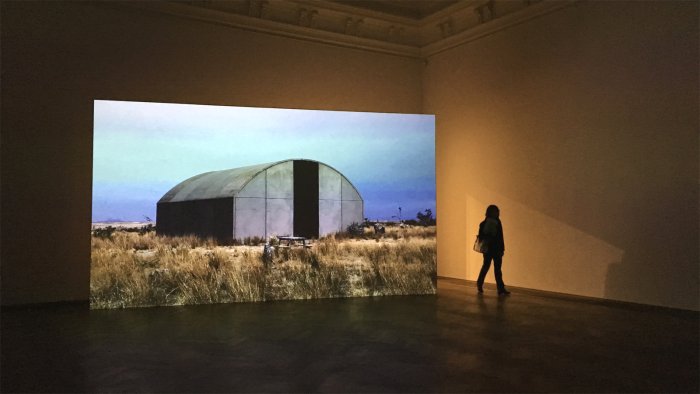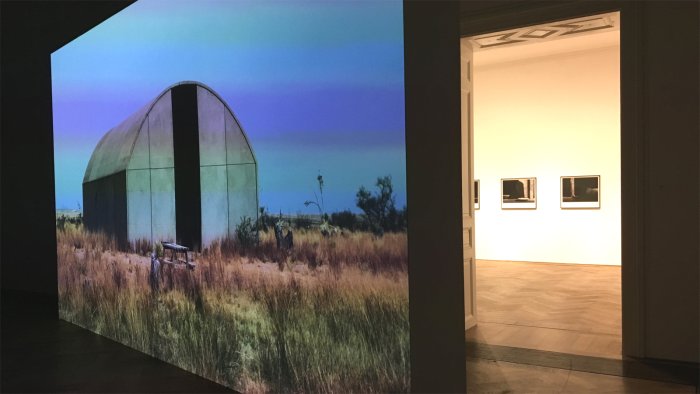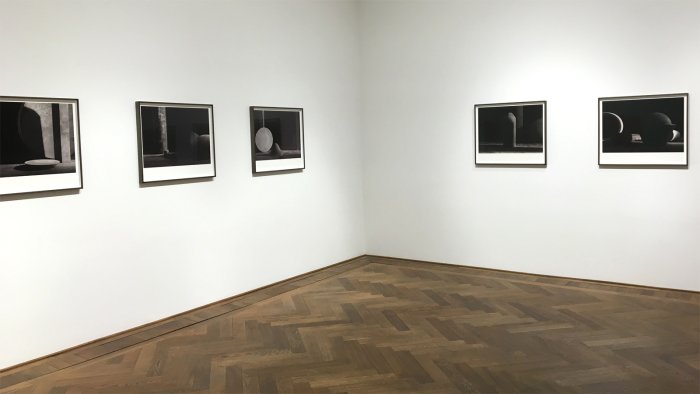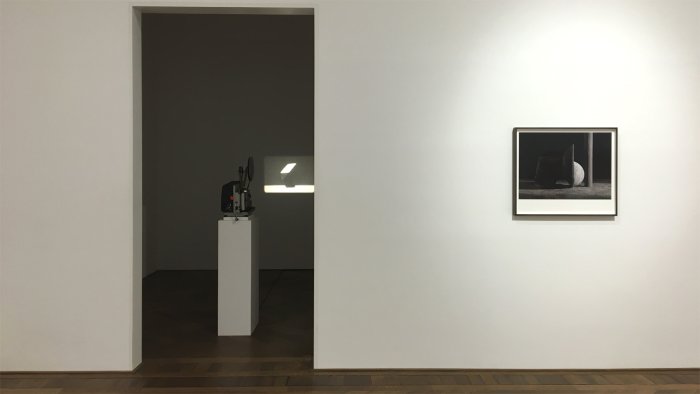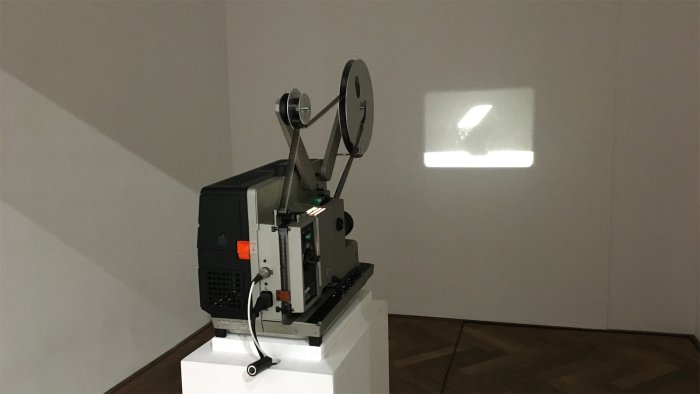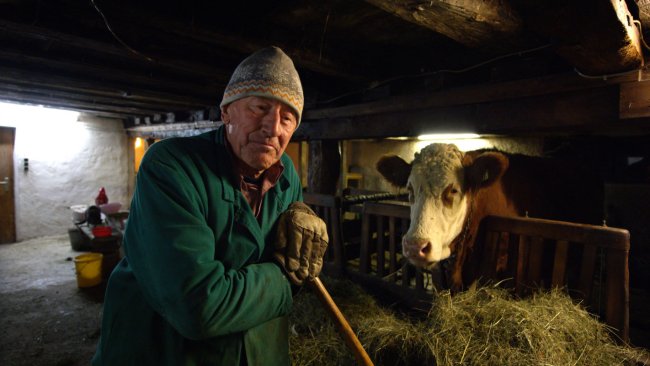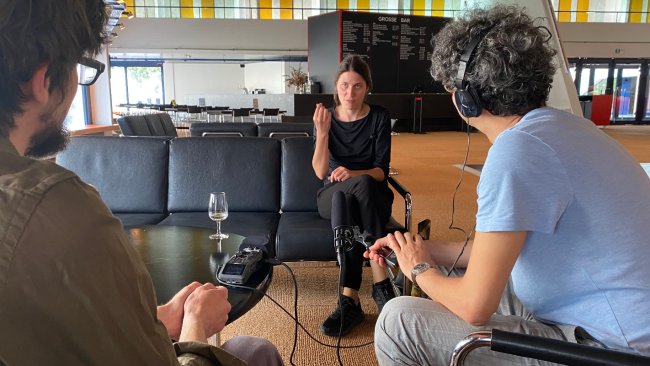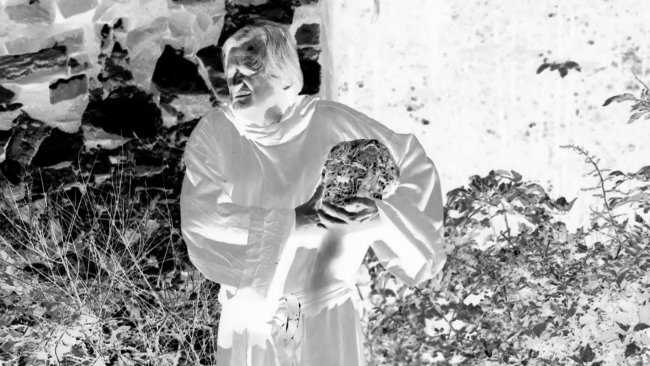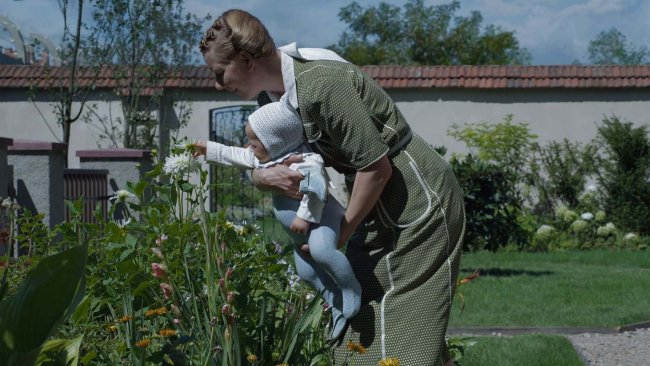Halves and Wholes | Erin Shirreff
[…] We experience a sort of permeability of forms, and this play with the classical formal boundaries becomes a way to interrogate the fundaments of images.
[…] We could say that all of the works presented at the Kunsthalle in Basel exploit the classical topic of “natura morta”, as far as this one opens up the question of the limits between representation and sheer visibility.
[…] After spending some time on the first floor of the Kunsthalle we are in a universe where vision defines reality, and reality does not define vision.
Text: Giuseppe Di Salvatore
Erin Shirreff’s exhibition at the Kunsthalle Basel, Halves and Wholes, is very intriguing from a formal point of view. A 16mm film projector, with its characteristic noise and sculptural presence, projects the reproduction of a sculpture in a park that, under snow, transforms itself into an abstract image – Sculpture Park (Tony Smith, Amaryllis). There is a classically framed series of photographs showing some abstract objects and explicitly referring to Giorgio Morandi’s paintings – Stills. A two-screen monumental installation shows two videos that are actually produced by manipulating the light from some photographs – Concrete Buildings. We experience a sort of permeability of forms, and this play with the classical formal boundaries becomes a way to interrogate the fundaments of images. Shirreff’s answer is clear: it focuses on light and its power to be the very essence and driving force behind still images and moving images.
In her works, light has always served the specific function of showing the permeability between two-dimensional and three-dimensional forms. Through film, video and photography, Shirreff makes an interesting reflection on sculpture, attempting to capture the very moment at which the viewer’s attention shifts from the “real” volume of the sculpture to its “abstract” visible surface. We could say that all of the works presented at the Kunsthalle in Basel exploit the classical topic of natura morta, as far as this one opens up the question of the limits between representation and sheer visibility. For example, the confrontation between the Morandi-like objects in the photographs and Donald Judd’s two large boxes used to store and exhibit art in the video, both tell a story of abandonment. And it is exactly when something loses its function that it becomes more visible; it becomes a pure object of visibility. To this respect, Shirreff’s works push us to observe how far the physical presence of an object equals the object as it is seen. After spending some time on the first floor of the Kunsthalle we are in a universe where vision defines reality, and reality does not define vision.
Yet, through our vision we are pushed back to reality; not the reality of that which is represented, but the reality of the Kunsthalle. The large dimensions of the two-screen installation and its reflection on the idea of a box, a container, on the connection between conservation and exhibition, and on the general idea of framing, cannot help but call our attention to the big hall of the Kunsthalle itself. There is an explicit play between the destiny of abandonment in Donald Judd’s containers and the lively presence of the historical building of the Kunsthalle in Basel. In this way, we will become more attentive to the installation of the series of photographs in the next room, which is so typical of museum presentations. Even in the last little room with the 16mm film projection and its projector placed in the centre of the room, we recognize another typical setting of contemporary art spaces. Therefore, photos, videos, and sculptures reveal their decisive installative essence. Shirreff’s work is site-specific and we could even dare to say that Halves and Wholes is also an exhibition about the Kunsthalle Basel itself.
This last reflection introduces us to a further interesting aspect of the exhibition that I would like to stress: its temporal dimension. The time we need to see the transformation of the sculptures by Tony Smith and Donald Judd becomes the transfiguration of the time of their abandonment. The latter is nothing more than the duration of the naturae mortae, which is finally defined by the amount of time our gaze is directed toward them. So what about the time we spend in the Kunsthalle? Is it a challenge for the Kunsthalle enduring its own natura morta? Is it a time of transformation of the site? Is it a time for us to learn how film, video, photography, sculpture, installation and performance can exist in the same place, which is made by the same singular vision?
Info
Halves and Wholes | Exhibition | Erin Shirreff | Kunsthalle Basel
First published: October 16, 2016
